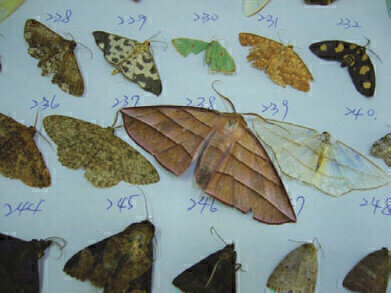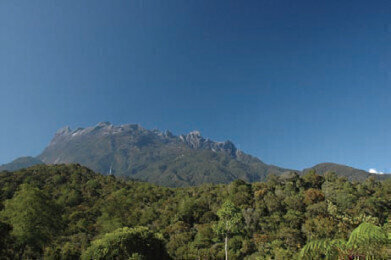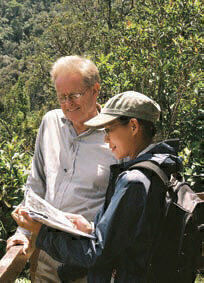News
The Global Impact of Climate Change on Biodiversity
Feb 23 2009
When three undergraduates set off on an expedition in 1965 to trap moths on Mount Kinabalu in Borneo, little did they realise that they were establishing the groundwork for a study of the
impacts of climate change. New research led by the University of York has repeated the survey 42 years later, and found that, on average, species had moved uphill by about 67 metres over the
intervening years to cope with changes in climate. This is the first demonstration that climate change is affecting the distributions of tropical insects, the most numerous group of animals on Earth, thus representing a major threat to global biodiversity.
University of York PhD student I-Ching Chen – first author of the new study – said: “Tropical insects form the most diverse group of animals on Earth but to-date we have not known whether they were responding to climate change. The last Intergovernmental Panel on Climate Change AR4 Report showed a gaping hole in the evidence. Our new study is good in that it increases the
evidence available, but it is potentially bad for biodiversity.”
Professor Chris Thomas, Department of Biology at York University and corresponding author added: “Large numbers of species are completely confined to tropical mountains, such as Mount
Kinabalu: many of the species found by the expeditions have never been found anywhere else on Earth. As these species get pushed uphill towards cooler conditions, the amount of land that
is available to them gets smaller and smaller. And because most of the top of the mountain is bare rock, they may not be able to find suitable habitats, even if the temperature is right. Some of
the species are likely to die out.”
The New Expedition in 2007 was joined by Henry Barlow, one of the members of the original survey, whose life-long enthusiasm for moths helped I-Ching Chen, who is from Taiwan, to come to terms with the sheer diversity of moths she had to identify. Thanks to the work of Jeremy Holloway, a Research Associate at the Natural History Museum in London, and another member of the 1965 expedition, who devoted his career to the identification (taxonomy) of moths from South East Asia, the research team were able to identify the new samples when they repeated the
original survey. “Photographs from the 1965 expedition led us back to exactly the same sites sampled 42 years ago”, said Dr Suzan Benedick, expedition member, and Universiti Malaysia Sabah entomologist. The new survey involved climbing the mountain and catching moths up to an elevation of 3,675 metres above sea level. Once all of the specimens had been caught and identified, then the team compared the heights at which each species had been found in 1965 and again in 2007. The results revealed a highly statistically significant shift, indicating that the moths are now found higher on the mountain than previously. There is a more positive note, however. As the highest and coolest location between the Himalaya and New Guinea, Mount Kinabalu represents an extremely important “climate change refuge”. Species that begin to find conditions too hot (or dry) in the surrounding lowlands may be able to find suitable conditions by moving upwards on the slopes of this mountain. “The critical thing is to protect the forests surrounding the mountain, so that the lowland species are able to reach the cooler conditions that they may need,” said Dr Jane Hill, expedition member, and one of I-Ching Chen’s advisors.
This project involved an international collaboration involving researchers in the UK, Malaysia and Taiwan, and was funded by the UK Government (DEFRA) Darwin Initiative. The study is published in the latest edition of Proceedings of the National Academy of Sciences (PNAS) and is available on-line: Elevation increases in moth assemblages over 42 years on a
tropical mountain. I-Ching Chen, Hau-Jie Shiu, Suzan Benedick, Jeremy D. Holloway, Vun Khen Chey, Henry S. Barlow, Jane K. Hill and Chris D. Thomas.
Digital Edition
Lab Asia Dec 2025
December 2025
Chromatography Articles- Cutting-edge sample preparation tools help laboratories to stay ahead of the curveMass Spectrometry & Spectroscopy Articles- Unlocking the complexity of metabolomics: Pushi...
View all digital editions
Events
Jan 21 2026 Tokyo, Japan
Jan 28 2026 Tokyo, Japan
Jan 29 2026 New Delhi, India
Feb 07 2026 Boston, MA, USA
Asia Pharma Expo/Asia Lab Expo
Feb 12 2026 Dhaka, Bangladesh






















